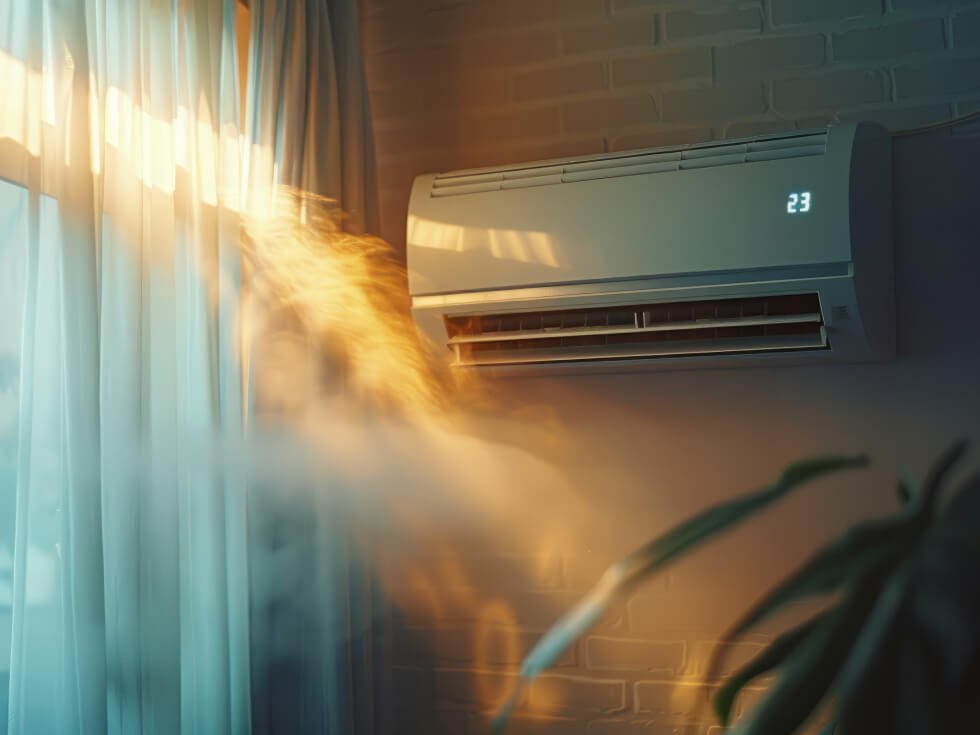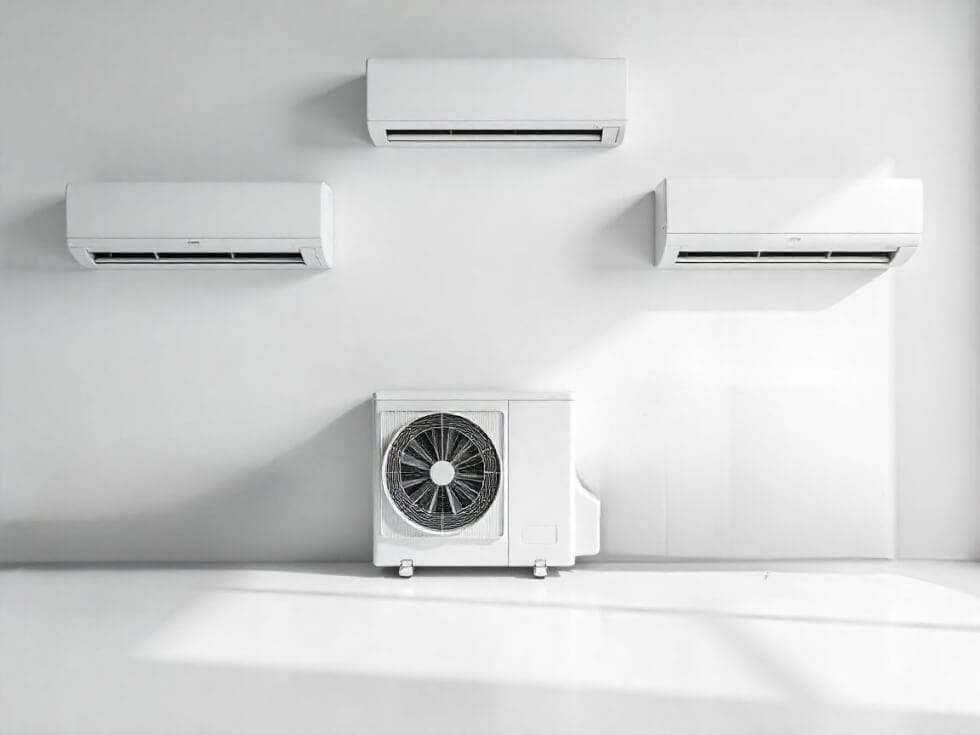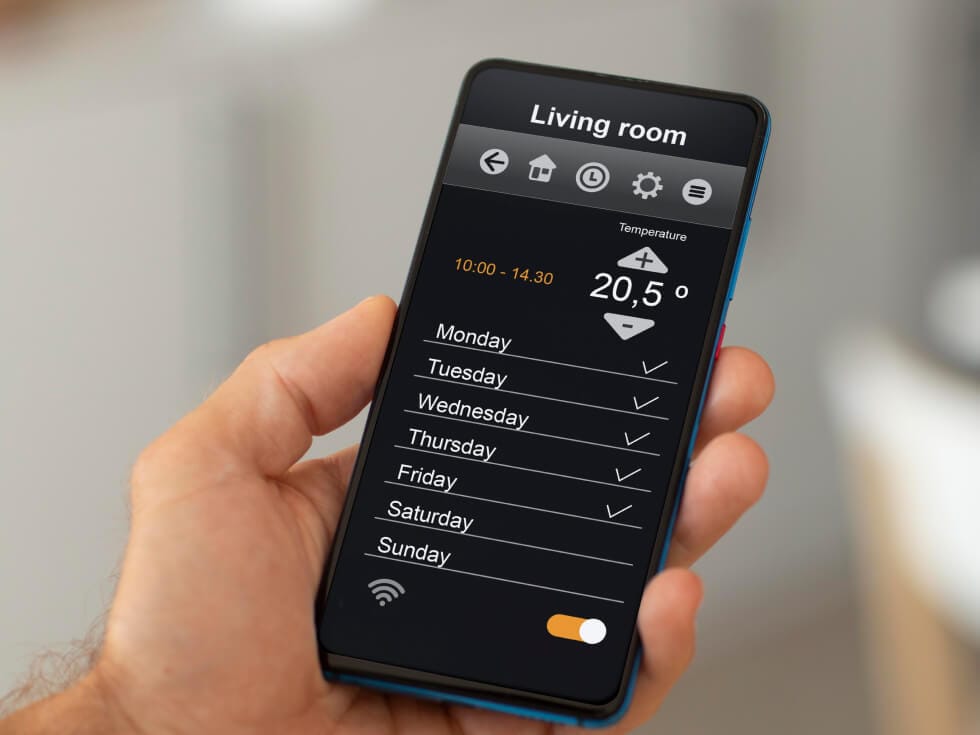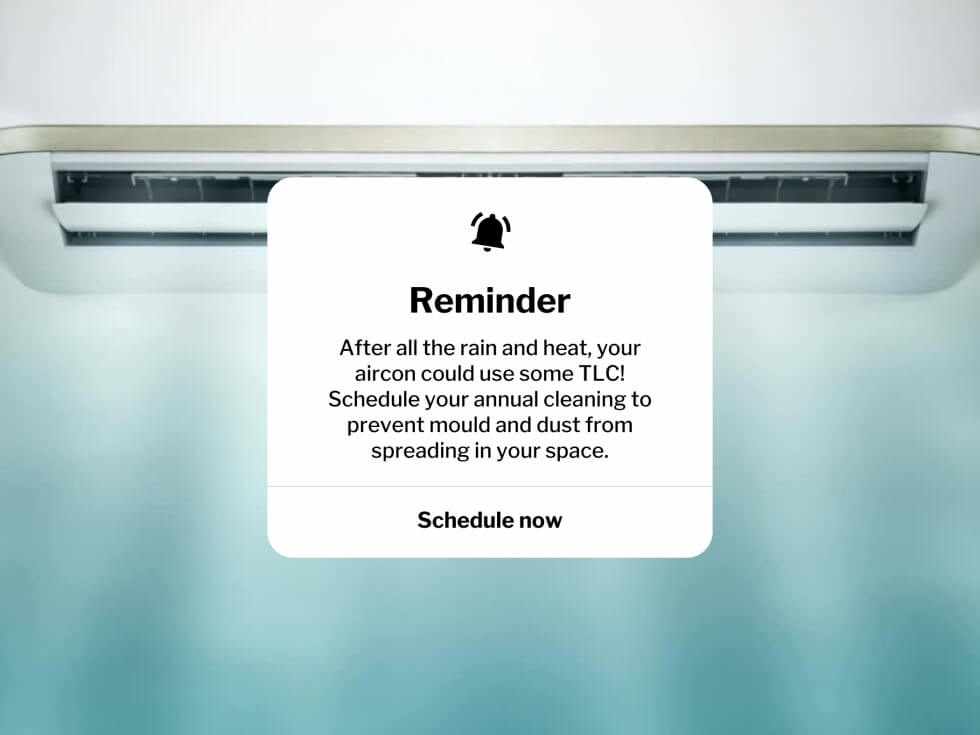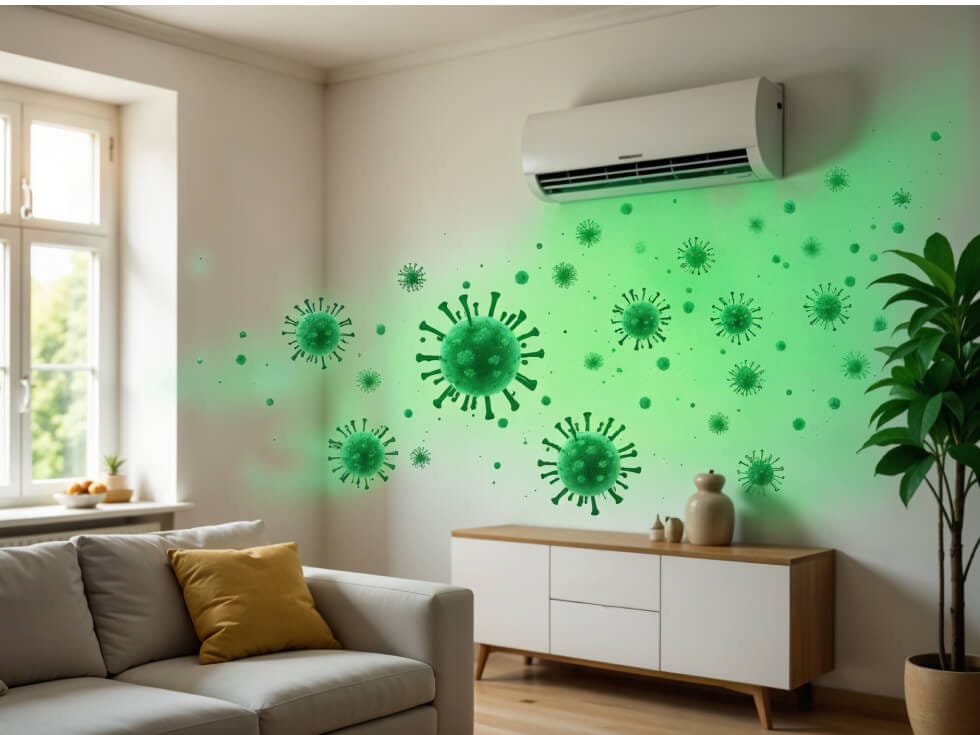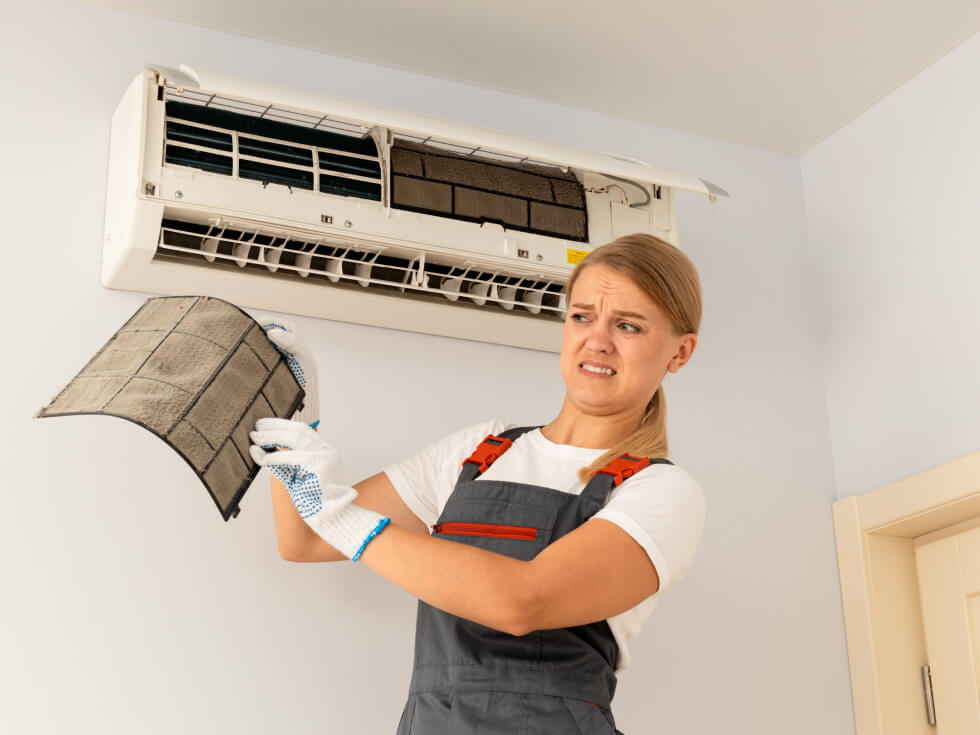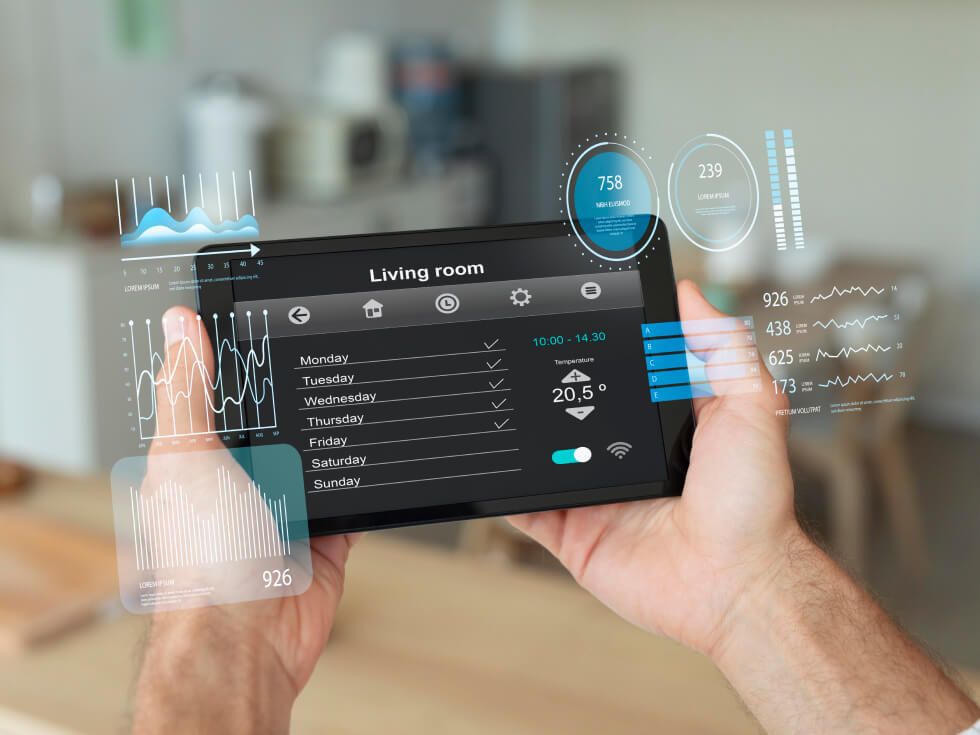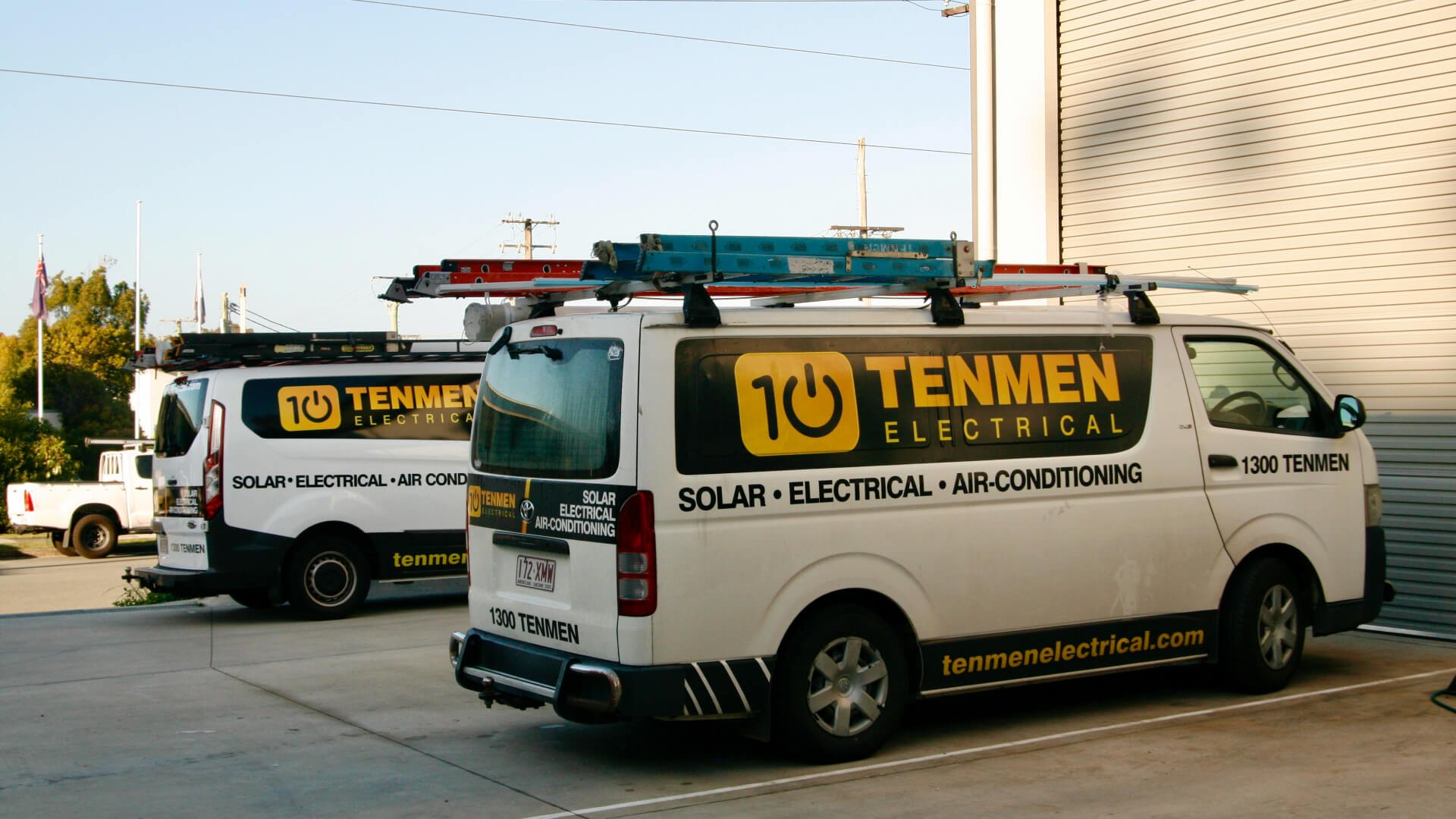Today, let’s chat about finding the perfect spot for your aircon. It’s not just about slapping it on any old wall and hoping for the best. The right air conditioner placement can make a world of difference to your comfort and wallet.
We’ll guide you through picking the best location for air conditioner units, whether you’re in a cosy apartment or a sprawling home. From energy savings to cooling power, optimal aircon placement is key. We’ll consider room layouts, wall types, and even ceiling heights to help you make the smart choice.
Ready to beat the heat without breaking the bank? Let’s dive into the nitty-gritty of air conditioner placement and set you up for a cool, comfy Aussie summer.
Key Takeaways
- Proper air conditioner placement boosts efficiency and performance
- Consider room layout and ceiling height for optimal cooling
- The right spot can lead to significant energy savings
- Exterior wall proximity affects unit effectiveness
- Smart placement enhances both comfort and aircon longevity
Why Air Conditioner Placement Matters?
Energy Efficiency
Proper air conditioning unit location can significantly reduce energy consumption. Units placed in shaded areas or away from direct sunlight work less to cool the air, leading to lower electricity bills. In contrast, poor positioning can force your system to work harder, increasing energy usage.
Cooling Performance
The right placement ensures even cooling throughout your space. A centrally located indoor unit distributes cool air more effectively, while an outdoor unit with good airflow cools more efficiently. Incorrect positioning can result in hot spots and uneven temperature distribution.
Unit Longevity
Optimal aircon positioning can extend the life of your system. Units placed in well-ventilated areas with minimal exposure to harsh elements last longer. Conversely, units in confined spaces or exposed to extreme conditions may wear out faster, requiring more frequent repairs or replacements.
| Factor | Good Positioning | Poor Positioning |
|---|---|---|
| Energy Efficiency | Lower energy bills | Higher energy consumption |
| Cooling Performance | Even temperature distribution | Hot spots and uneven cooling |
| Unit Longevity | Extended lifespan | Increased wear and tear |
Ideal Positioning for Indoor Units
The indoor unit of an air conditioning system is responsible for circulating cool air inside the room or building. It typically contains the evaporator coil, air filter, and a fan. It is designed to operate quietly while efficiently distributing cool air throughout the space.
For efficient cooling, we recommend installing your air conditioner on an exterior wall in a central spot. Installing the unit on an exterior wall is beneficial because it allows for a more straightforward and efficient connection to the outdoor unit, minimising the length of refrigerant lines and reducing potential energy loss.
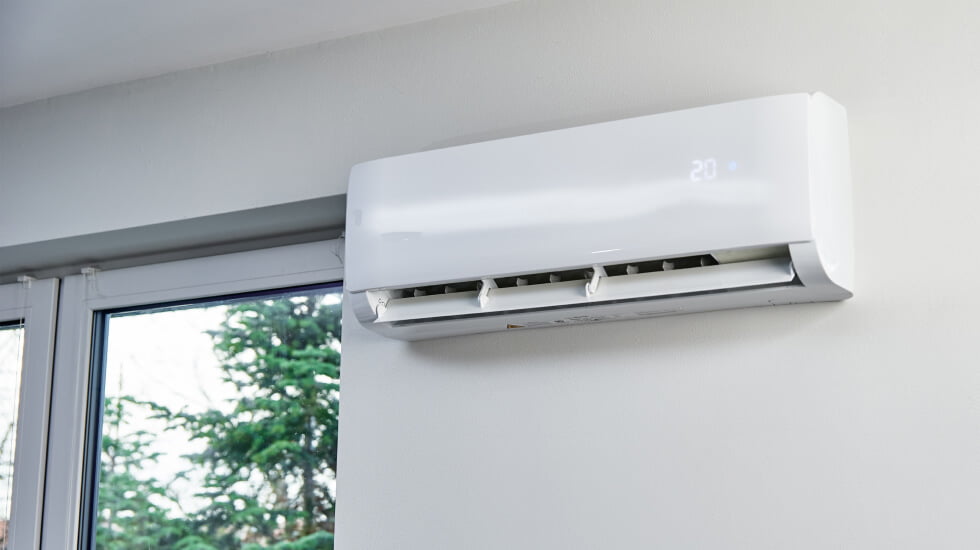
Additionally, exterior walls often provide better structural support and can help in dissipating any vibrations, ensuring the unit operates smoothly. This setup ensures even distribution of cool air throughout the room. In living rooms, position the unit above frequently used areas like sofas or workspaces for direct comfort.
Height Requirements
Mount your indoor unit high up near the ceiling. This placement allows cool air to naturally flow downwards, creating a comfortable environment. For bedrooms, units with adjustable louvres are ideal as they can direct airflow away from the bed, preventing cold drafts during sleep.
Clearance Guidelines
Maintain at least 15 cm of clear space around the unit. This gap prevents obstruction and helps the system operate efficiently. When considering the best position for the air conditioner in living room areas, ensure furniture doesn’t block the unit’s airflow.
| Room Type | Ideal Position | Special Considerations |
|---|---|---|
| Bedroom | High on exterior wall | Use adjustable louvres to direct air away from bed |
| Living Room | Central location above seating areas | Ensure unobstructed airflow around furniture |
Optimal Placement for Outdoor Units
The outdoor unit houses the components that release the heat absorbed from the indoor air. It typically includes the compressor, condenser coil, and a fan. The fan in the outdoor unit helps expel the hot air outside, ensuring the system can continue cooling the indoor space effectively. The outdoor unit is usually installed on the exterior of a building, often on the ground or mounted on a wall.
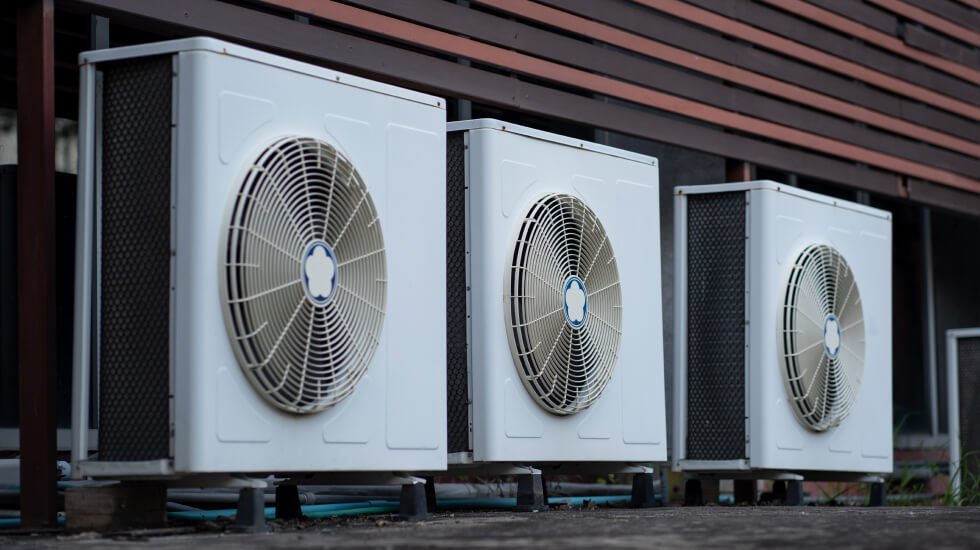
Outdoor units perform best when shielded from direct sunlight. Place them on the south or southeast side of your home where they’ll receive natural shade. This keeps the unit cool and reduces energy consumption.
Ventilation
Install your outdoor unit in an open area with at least 30 cm of clearance on all sides. This allows for adequate heat dissipation and prevents overheating.
Distance from Obstructions
Keep outdoor units away from potential obstacles. Avoid placing them near trees, shrubs, or structures that could block airflow or drop debris onto the unit. A clear space ensures easy maintenance access and optimal performance.
- Install on a rigid, flat surface to minimise vibrations
- Position away from windows or areas where noise might be disruptive
- Ensure the unit is easily accessible for regular maintenance
Room-Specific Considerations for Air Conditioner Placement
In bedrooms, finding the best position for the air conditioner will impact your sleep. We recommend avoiding spots directly above the bed. This prevents cold air from blowing straight onto you while you sleep. A good choice is to place the unit on the wall opposite the bed, allowing for even air distribution.
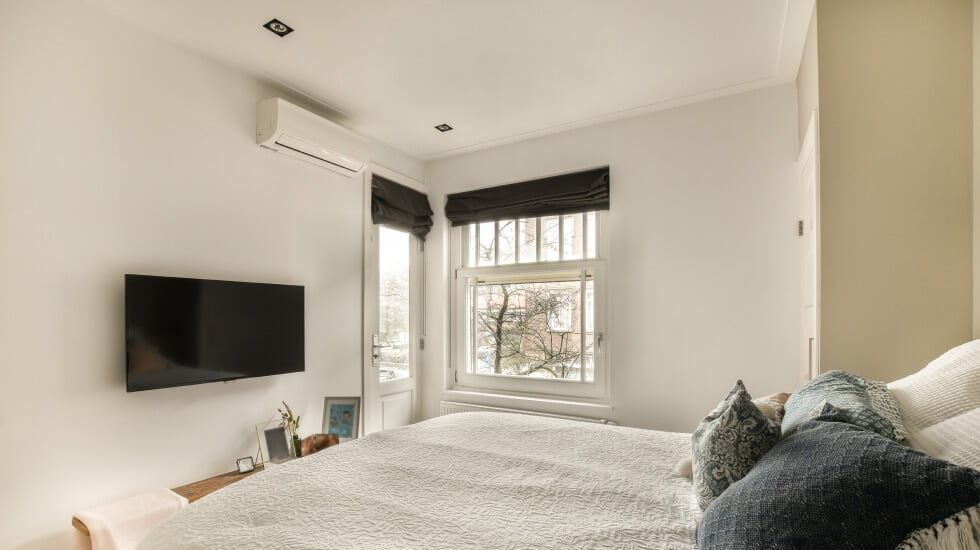
For living rooms, the best position for the air conditioner is often a central location. This helps cool the entire space evenly. If you have an open-plan area, consider placing the unit where it can reach both the living and dining zones.
In home offices, cool air should reach your work area without causing discomfort. Position the AC unit to blow air across your desk rather than directly at you.
Kitchens, with their frequent heat-generating activities, require careful consideration when placing an air conditioner. It’s best to avoid installing the unit directly above or near cooking appliances to prevent uneven cooling and unnecessary strain on the AC. Instead, consider placing it on a wall opposite or adjacent to the cooking area, ensuring that the cool air can circulate throughout the space without being immediately counteracted by the heat.
| Room | Recommended AC Placement | Reasons |
|---|---|---|
| Bedroom | Wall opposite the bed | Even cooling without direct airflow while sleeping |
| Living Room | Central wall | Uniform cooling across the space |
| Home Office | Side wall near workspace | Cools work area without direct airflow |
| Kitchen | Away from heat sources | Prevents strain on the AC unit |
Avoiding Common Mistakes in Air Conditioner Positioning
When it comes to air conditioner placement, there are several pitfalls to watch out for. We’ll explore common errors in aircon positioning and how to sidestep them for optimal performance and comfort.
Blocking Airflow
One frequent mistake is obstructing the unit’s airflow. Keep furniture, curtains, and other objects away from your air conditioner. This ensures proper circulation and prevents the system from working harder than necessary.
Ignoring Noise Factors
Noise can be a significant issue, especially with outdoor units. Avoid placing them near bedrooms or living areas. Consider using noise barriers or selecting quieter models to maintain a peaceful environment.
Overlooking Aesthetic Impact
Air conditioners can affect your home’s appearance. Choose locations that blend with your decor or consider concealment options. For outdoor units, think about how they’ll look from both inside and outside your home.
Professional Installation Usually Pays Off
While you might have ideas about where to install air conditioner units, professional installers bring invaluable expertise to the table. They assess your home’s layout, technical infrastructure, your personal preferences, and determine the best placement for optimal cooling.
Licensed professionals ensure proper installation, which is vital for maintaining your warranty. They have the tools and knowledge to set up your system correctly, reducing the risk of future issues. If problems do arise, you’ll have recourse through the installation company.
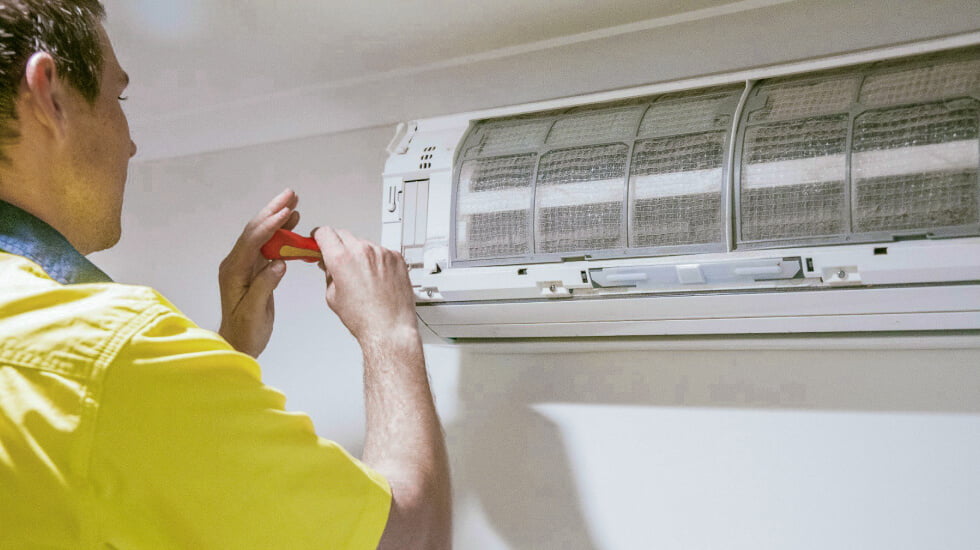
Even if you think you’ve found the perfect spot for your air conditioner, it’s wise to consult with experts. They can confirm your chosen location or suggest alternatives that might work better. Their insights can lead to improved energy efficiency and more consistent cooling throughout your home.
- Professionals assess factors like sun exposure, infrastructure and airflow
- They ensure compliance with local building codes
- Expert installation can extend the lifespan of your unit
If you are ever in doubt, reach out to our experienced team at Tenmen. We are covering the entire Sunshine Coast, and we have both the expertise and the tools to ensure your aircon unit is installed in the best possible way. With careful planning, we can ensure your air conditioning unit fits seamlessly into your living space.

